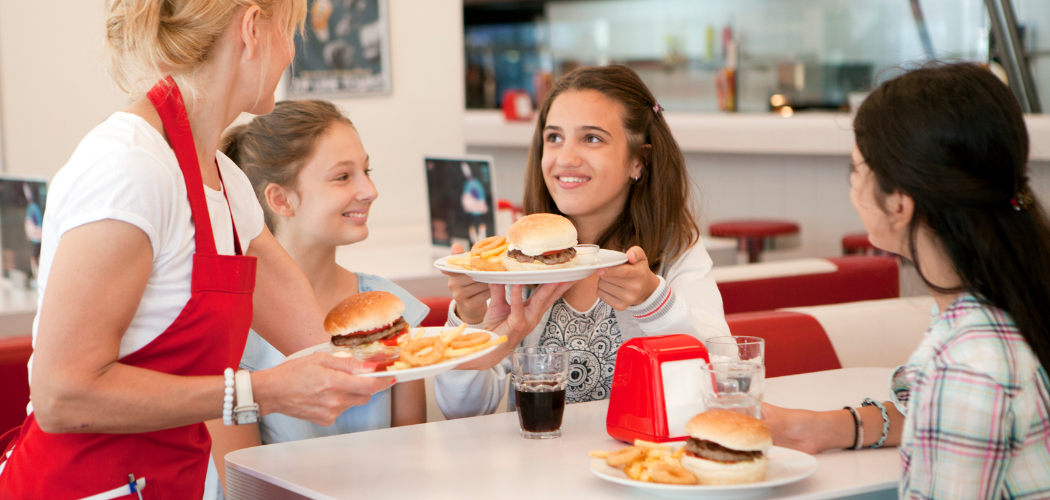The quiet loyalty crisis no one in the restaurant industry wants to talk about
If you’ve read the recently released Nation’s Restaurant News’ Loyalty and Customer Experience Market Leader Report 2025 (a 40-page report I highly recommend you download), you probably walked away with the impression that things are going just fine in restaurant loyalty land. Traffic’s down? No problem, just double down on loyalty. Operators under pressure? Loyalty to the rescue! Not sure how to grow? Let’s fix it with loyalty, yet again.
Maybe this was a valid approach at one time. But read closely, between the lines, behind the graphs, and buried under the positive spin, and you’ll find something far more concerning:
The loyalty strategies most restaurants are investing in are shallow, short-sighted, and structurally unsustainable.
That’s a strong statement. But it needs to be. Because if we don’t name the problem now, we risk building an entire digital loyalty future on a crumbling foundation of false comfort and misapplied tactics.
Loyalty Isn’t Broken. It’s Just Being Massively Misunderstood
There is an illusion of progress we first need to address. The report tells us 53% of restaurants have some form of loyalty program, with quick-service and fast-casual brands leading the charge. Even better, operators are pulling in nearly 40% of their sales from loyalty-linked channels, with ambitions to push that to 53% by next year.
Sounds impressive, right? But when you shine a light onto the strategies powering those numbers, the premise gets a bit wobbly:
- 65% of programs lean heavily on discounts.
- Only 18% use personalization.
- Gamification, one of the most powerful engagement tools in existence, barely shows up at 6%.
Let that sink in: In an era defined by personalization, interactivity, and identity-driven connection, we’re still trying to build loyalty with paper punch cards in a digital disguise. The truth the report doesn’t dare to say out loud is that most restaurant loyalty programs today are just discount delivery systems dressed up as strategy. I would argue that’s not loyalty. It’s transactional bribery.
The Discount Addiction No One Wants to Admit
I’m continuously troubled by an unspoken addiction running rampant in this industry and its name is discounting. It’s the go-to, the easy win, the temporary spike in metrics that feels good right up until it doesn’t. But if your loyalty program is built around giving customers discounts, you’re not building loyalty, you’re just teaching your customers to wait for coupons.
It’s the Groupon problem all over again. Flashy and crowd-pleasing at first, but eventually toxic. And absolutely unsustainable for brands operating on razor-thin margins. If your loyalty program only works when you’re giving money away, then you don’t have a loyalty program. You have a slow-drip revenue leak with a QR code.
Gamification Is Dead—Because We Killed It
Let’s talk about gamification. Or more specifically, the rotting husk of what people think gamification is. The report notes that only 6% of loyalty programs use gamification strategies effectively (and frankly, even that number feels generous). What most restaurants are calling gamification is just a shallow layering of points and badges, mechanics that haven’t evolved since Web 1.0.
Many years ago, I called this badge fatigue and loyalty backlash. Points and badges, without a meaningful narrative or emotional payoff, are motivation dead ends. They may drive momentary attention, but they rarely generate lasting behavior change or community engagement.
As a veteran game designer (vintage original Xbox days, yes I’m that old), I’m intimately aware of what real gamification looks like. It’s choices, consequence, and time pressure. And mix in a bit of what I call “funstration,” that fine-tuned tension between challenge and payoff that keeps people coming back.
When done right, gamification becomes less about cheap gimmicks and more about designing systems that mirror how people actually build attachment and identity. And almost no one in this space is doing that yet.
Data Without Design Is Just Noise
The NR report is full of optimism about data. Operators are collecting more of it than ever. Loyalty platforms are overflowing with behavior insights, transaction history, and preferences. But here’s the problem no one seems willing to say out loud:
Most restaurant brands have no idea what to do with the data they’re collecting.
Without a clear experience design strategy—one that transforms data into customized journeys, offers, and emotional cues—this data is just expensive trivia. We need to stop acting like collecting data is the goal. It’s not. Designing with data is.
The App-less Mirage: When Convenience Kills Connection
The new hot trend is “app-less loyalty.” Link your credit card, get your points automatically. Frictionless. Invisible. Seamless. Sounds smart, right? But this is really just a loyalty strategy that erases every opportunity to engage, surprise, or delight the customer.
In the Portillo’s Loyalty Review, I broke down exactly why this approach is doomed to fail. Loyalty can’t be just about removing friction. It needs to create micro-interactions that reinforce a sense of progress, identity, and belonging. Strip that away, and what you’re left is not rich and enduring loyalty, but merely ambient behavior tracking.
And no one ever fell in love with a passive points ledger.
Loyalty Without Emotion Is Loyalty Without Value
What makes loyalty stick? It’s not the points. It’s not the discounts. It’s not the seamless check-ins or invisible automation.
It’s emotion.
It’s the feeling of being remembered. Of being recognized. Of being part of something more than just a transaction. This is where the most successful programs—Starbucks, Chick-fil-A, McDonald’s—excel. They don’t just offer rewards. They build rituals. They design habit loops. They create miniature hero’s journeys for their customers. And those journeys don’t just drive repeat visits. They build brand gravity.
The Threat No One Sees Coming: Google Is Eating Loyalty for Lunch
While restaurants struggle to modernize their loyalty systems, a far bigger threat is quietly looming. I’m talking of course about AI shopping assistants. As I wrote in Google Killed Loyalty, the biggest disruption isn’t coming from within the industry. It’s coming from algorithmic middlemen who are systematically removing brands from the purchase journey.
If your loyalty program isn’t emotionally meaningful, it will get optimized out of the decision funnel. AI doesn’t care about your brand story. It cares about speed, price, and preference patterns. If you don’t own the relationship, someone else will. And you may not even notice until it’s too late.
The Path Forward: Design Loyalty That’s Worth Believing In
Here’s the good news: The tools exist, the science is sound, and the opportunity is wide open. But we need to stop confusing tracking with engagement. We need to stop mistaking discounts for loyalty. And we need to build experiences that go beyond the transaction and into the territory of human connection.
That means:
- Designing for emotion, not just efficiency
- Creating identity-based systems, not just point collectors
- Leveraging gamification as an experience design framework, not a gimmick
- Measuring loyalty with real engagement metrics—like the SNES (Steve’s Net Engagement Score™)
Final Thought
The RB Loyalty Report tells us what restaurants are doing, but it doesn’t tell us what they should be doing. And, in my opinion at least, what they should be doing is this:
Rethinking loyalty not as a marketing tactic, but as an experiential engine that drives identity, emotion, and long-term behavior change.
That’s how restaurants will survive. That’s how they will win. And that’s how they can build loyalty worth believing in.


